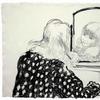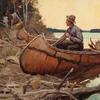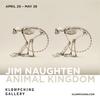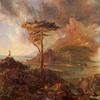Frederic Leighton, Alfred Gilbert & The New Sculpture
- LONDON, United Kingdom
- /
- February 05, 2015
The Fine Art Society, a gallery synonymous with The New Sculpture movement, will present a major selling exhibition of some of the most famous sculptures produced by these revolutionary artists. In addition to a number of domestic statuettes, the gallery will also be exhibiting a full-size cast of George Frampton’s Peter Pan, as well as an eight foot aluminium cast of Alfred Gilbert’s iconic Eros. The show coincides with Tate Britain’s important survey of Victorian Sculpture, Sculpture Victorious (25th February - 25th May 2015).
The last two decades of the 19th century saw the dramatic revival of sculpture in Britain. Before this period of intense experimentation, sculpture had grown both stagnated and unoriginal. However, in the 1880s a radical new movement developed, which dominated the sculptural style in the country until well into the next century. The New Sculpture, a phrase coined by Edmund Gosse in 1894, was described by M.H. Spielmann as ‘a change so revolutionary that it has given new direction to the aims and ambitions of the artist and raised the British school to a height unhoped for’. Following Frederic Leighton’s lead, and championed by Alfred Gilbert, the movement flourished.
The New Sculptors produced a series of brilliant and innovative works. Pieces such as Lord Leighton’s An Athlete Struggling with a Python, first exhibited at the Royal Academy in 1877, and Gilbert’s deeply auto-biographical Comedy and Tragedy, 1890, were descriptive and symbolic.
The influence of French sculpture can also be recognised, most obviously through the naturalism of the brilliant modeler Jules Dalou, who was instrumental in the change in attitude via his teaching at the South Kensington Art School, and the Lambeth School of Art, where a number of the New Sculptors were students.
Leighton and Gilbert had studied in Paris, and later Harry Bates and William Goscombe John both worked under Rodin. When an exhibition of pieces by Drury, Onslow Ford, Frampton, Thorneycroft and Goscombe John was held at the 1900 Exposition Universalle in Paris, The New Sculpture movement achieved international recognition.
The Fine Art Society were Alfred Gilbert’s dealers during his lifetime, and the gallery helped indeveloping a number of the sculptors’ careers, not least through the seminal First Exhibition of Statuettes by Sculptors of Today, British and French, in 1902. This exhibition was one of the first shows to promote the statuette, reduced in size to be shown in the home. This was an entirely new way of promoting sculpture.
An important aspect of The New Sculpture movement was the way the models could be viewed: their place in the gallery, domestic setting, and also their materials. These sensuous small figures were made increasingly attractive with patinas achieved by the significant developments in casting techniques in Britain at the time. A new interest in surface, texture and colour was evident – achieved initially by Gilbert after he learnt the lost wax technique in Italy, and then developed by artists such as George Frampton and Onslow Ford, using materials such as ivory, aluminium and semi-precious jewels.
The forthcoming exhibition is the latest in over a century of shows at The Fine Art Society dedicated to this extraordinary and influential group of artists. Offering for sale an impressive collection of some of the most important works of the period, the exhibition aims to stimulate a deeper understanding of The New Sculpture movement, and encourage a wider appreciation of its significance in the history of sculpture in Britain.
Contact:
Camilla PurdonFlint PR
0203 463 2086
camilla.purdon@flint-pr.com
148 New Bond Street
London, United Kingdom
art@faslondon.com
(0)20 7318 1895
















